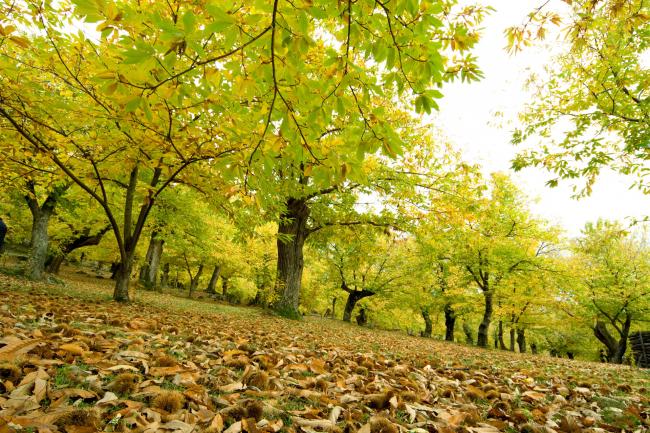in situ composting for chestnut woods protection, valorization and eco-sustainable management

The project aims to implement a biological and environmentally friendly management of crop residues for an innovative use aiming to increase sustainability and profitability in hilly, mountainous or marginal areas.
Innovation and organization of agronomic and technological process will be introduced in the chestnut system for better pest control and sustainable management of chestnut woods. The agricultural practices proposed are in balance with natural ecosystems and the environment.
This environmentally friendly approach will bring a significant improvement in the product quality, limiting the spread of pathogens and parasites.
The activities will consist in the preparation of lignocellulosic biomass piles using residues available on the particular field, at zero meters.
A composting process will be carried out in situ, using mowing and crop residues, according to specific methodological criteria.
The fermentation processes will be chemical-physical-microbiological monitored.
The quality of the compost obtained downstream to the process, will be verified also as substrate, and soil amendant on different crops.
Simplification and rationalization of all the procedures within the chestnut ecosystem.
At European, national and regional level, the commitment to encourage sustainable, organic, integrated, alternative to conventional agriculture is strongly felt. Campania is one of the first regions in terms of chestnuts production and covered surface. In many areas, the colture represents a resource of great importance, not only from an economic point of view, but, more relevant, for the role in rural landscape, in safeguarding the environment and in the territory conservation. In recent years, also due to climate change, we are attending a progressive reduction in production and surfaces. The sector is generally, characterized by the presence of small and medium sized enterprises, with highly differentiated production types; therefore, the sector's policies must be aimed at enhancing quality of typical products, improving agronomic management also in the prospective of costs reduction and increasing profitability. The national chestnut plan highlights the need for a requalification of chestnut cultivation towards more sustainable forms of production, capable of opening up new economic opportunities to the agricultural sector.
The valorisation of the obtained biomasses represents an additional value: it bears to avoid the practice of burning, now criminally pursued, preserves organic substance, prevents fires and reduces CO2 emissions. This biomass after a process of biological oxidation, will constitute a source of organic substance that improves soil structure and fertility, slow-release nutrients, will act on soil biodiversity, with consequent control of plant pathogens and pests.
The enhancement of plant biomass obtained from chestnut grove cleaning residues represents a source of added value for the sector and avoids the practice, now criminally pursued, of burning the residues which, among the countless damages, causes loss of organic substance, increases fire risks, increases the CO2 emission. This vegetable biomass, after a guided biological oxidation process, can be used as a source of organic substance that improves the structure and fertility of the soil by providing slow-release nutrients, restoring soil biodiversity, while limiting the development and spread of plant pathogens and parasites. Ultimately reducing the impact of agricultural and forestry activities on the environmental matrix. For the chestnut sector this is an opportunity for sustainable growth that takes into account the ecological dynamics of the entire ecosystem, safeguards soil biodiversity and can represent a valid tool for improvement and innovation of company performance. The on-site composting plants present simplicity of construction, low costs, and entails a consequent fallout in the reduction up to zero of the disposal costs of lignocellulosic material.
Another strong point is due to the absence of lasting investments. The piles are prepared only from natural material of plant origin recovered on site.
The proposed innovation will be easy and economically profitable to implement both for the large population of micro-companies and for leading companies increasingly attentive to global sustainability.